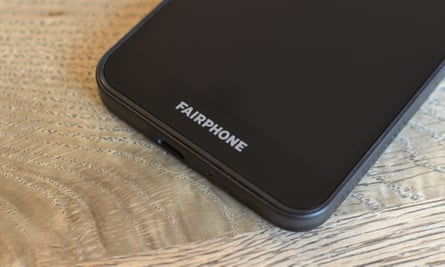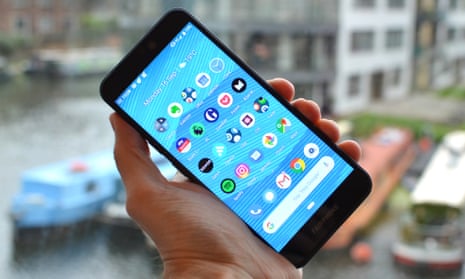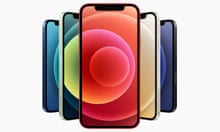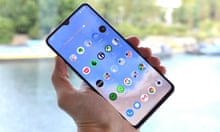What if you could buy a phone that will last five years, can be easily repaired and is made as ethically as possible? That’s the aim of the latest Fairphone 3 – and on many counts it succeeds.
The Guardian’s product and service reviews are independent and are in no way influenced by any advertiser or commercial initiative. We will earn a commission from the retailer if you buy something through an affiliate link. Learn more.
Ethically creating a phone is a lot harder than it may sound, but you have to start somewhere. Amsterdam-based Fairphone turned from an awareness campaign about conflict minerals into a phone company in 2013, and aims to source as many materials as possible in both human and environmentally kind ways.
Now in its third iteration, the £420 Fairphone 3 is making progress, not only in responsible sourcing of materials, but in manufacturing and longevity, with a modular, repairable design. It even comes with its own screwdriver.
Chunky, translucent plastic

There’s no two ways about it: the Fairphone 3 has a dated design. Big chunks of body at the top and bottom of the screen are reminiscent of smartphones from five years ago. The LCD display is fairly small by today’s standards at 5.7in, but is reasonable with pretty good colours and excellent viewing angles, and is just about bright enough – most of the time you’ll see the brightness cranked up to maximum. It’s covered by Gorilla Glass 5, which isn’t the latest, but at least should make it fairly scratch-resistant.
The rest of the body is utilitarian and boxy. At almost 1cm thick, the Fairphone 3 is certainly a chunky beast. The big chin and forehead, as well as fairly thick bezels each side of the screen, make the phone a lot larger than its small screen dimensions might suggest too. It’s closer in size to a phone with a screen over 6.4in, and so requires similar hand-stretching to use it.
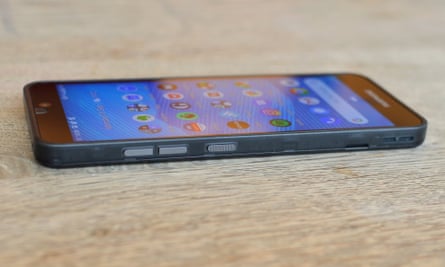
The translucent black plastic body feels well made and hard-wearing. Being able to see the usually hidden components through the plastic makes it all the more interesting. There’s very little flex or give anywhere on the phone, which is all the more impressive give you can take the back off and remove modules.
The volume buttons and power button are all on the left side of the phone, which took some getting used to. The speaker, too, is mounted in the left side of the phone, which means you’re more likely to block it with an errant finger.
Through the back of the phone you can see the phrase “Change is in your hands” written on the battery, which is a little bit self-congratulatory for my tastes.
A USB-C socket in the bottom handles charging, while there is a (now rare) headphone socket in the top. There’s also a fingerprint scanner on the back, which works fairly well but is a bit high up the back to be easily reachable without moving the phone down your hand a little each time you need to touch it.
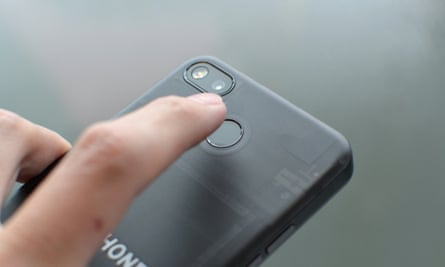
Specifications
Screen: 5.7in FHD+ LCD (427ppi)
Processor: Qualcomm Snapdragon 632
RAM: 4GB of RAM
Storage: 64GB + microSD card
Operating system: Fairphone OS based on Android 9 Pie
Camera: 12MP rear, 8MP selfie-camera
Connectivity: dual sim, LTE, wifi, NFC, Bluetooth 5 and GPS
Dimensions: 158 x 71.8 x 9.9mm
Weight: 189g
Middle of the road
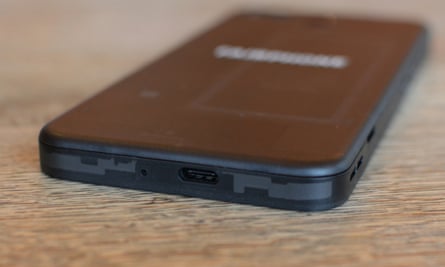
The Fairphone 3 won’t win any prizes for performance. It has Qualcomm’s Snapdragon 632 chip from last year, which is a lower-performance mid-range processor, 4GB of RAM and 64GB of storage, plus a microSD card slot for adding more.
General performance isn’t terrible, but it certainly isn’t fast, even compared with mid-range smartphones costing less. There are elements of lag and stutter all over the system. You quickly run into slowdown when simply trying to find your way to a meeting, as launching the calendar app to find an address, then Google Maps and Citymapper to compare directions was enough to repeatedly introduce significant lag. Press a button and nothing happens long enough to make you question whether you managed to actually activate the button.
Battery life is equally middle of the road at about 26 hours between charges, meaning it lasts from 7am on day one until 9am on day two. That is while using the Fairphone 3 as my primary device with a total screen time of just over four hours, lots of email and messages, browsing in Chrome, four hours of Spotify via Bluetooth headphones, 40 minutes of offline Amazon Prime Video and a few photos.
The Fairphone 3 doesn’t ship with a charger or cable. It charges in about 2 hours 10 minutes using a standard 30W USB-C charger, or faster using one that supports Qualcomm’s QuickCharge 3 (€19.95 from Fairphone). But there’s also the possibility of just swapping in another charged battery, given you can remove it in less than five seconds.
Fairphone OS

The Fairphone 3 ships with its own Fairphone OS, which is a standard version of Android, free of bloat or duplicated apps and all the better for it. The only minor disappointment is that it ships on Android 9, not the new Android 10, although Fairphone aims to provide security and software updates for five years from release.
Anyone who has used Android in the last five years will be familiar with it, while switching to it from an iPhone is fairly straightforward. It’s clear that Fairphone needs to do a better job at optimising the performance of the software, however, as the issues of lag are likely to be avoidable with a bit of work.
Camera

The Fairphone 3 has a fairly standard 12-megapixel camera on the back, which is technically the same as that fitted to Google’s Pixel 3a, but doesn’t come anywhere close, lacking the software magic that makes Google’s camera so good.
In good lighting the Fairphone 3 shoots reasonable pictures with a solid amount of detail and colour. The same goes for selfies and portraits. Unfortunately that’s not the case in middling to low light conditions. Shots taken indoors at night with a mixture of overhead and lamp lighting produced dark, grainy and indistinct images.
Overall, the Fairphone 3’s camera performance is similar to today’s budget phones: fine on a sunny day, but poor indoors.
Repair modules
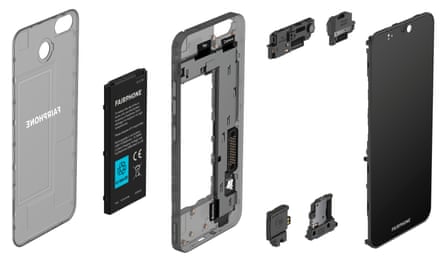
Other than efforts from the company to source materials ethically, and to pay the factory workers who put together the phone a top-up to a living wage, the most exciting thing about the Fairphone 3 is its modular nature. It’s not some Google Ara reinvention of the wheel, but rather the ability to take out and replace or repair parts when they go wrong.
Starting from the removable back and battery, the rest of the phone can be pulled apart with standard screws. Fairphone even includes the correct screwdriver in the box. If a part breaks, buy a replacement module, screw it in place and away you go. That’s the idea, anyway, and repair guide masters iFixit gave it a big thumbs up recently.
The individual parts aren’t that cheap, of course, but given you can place them yourself without breaking everything else in the process it seems like a fair trade-off. A replacement camera costs €49.95, the speaker €19.95, the bottom module with the USB-C socket in it costs €19.95 and the top module with the selfie camera, headphone socket and other bits costs €29.95. Probably more widely used parts are the screen for €89.95, the battery for €29.95 or the back cover for €24.95.
Observations

Fairphone includes a bumper case in the box that wraps the sides of the phone while leaving the back open
The vibration motor is strong but imprecise, feeling like one from four years ago
Bluetooth performance is poor, causing hiccups with headphones that are rock-solid with other devices
The Fairphone 3 is not water-resistant
Price
The Fairphone 3 costs €450 direct, or £420 from the Phone Co-op, and is available for pre-order now delivering in mid-September. The Fairphone 3 is also available on Sky Mobile on contracts starting at £21 per month.
For comparison, Google’s Pixel 3a costs £399, the OnePlus 7 costs £499 and the Motorola Moto G7 costs £220.
Verdict
The Fairphone 3 is a device full of compromises with one massive advantage: being ethical.
The design is a bit more interesting thanks to its translucent finish, but it’s chunky and dated-looking. The 5.7in screen is pretty good, but the big chin and bezels make the phone considerably larger and harder to use than it could be. It has USB-C and a headphone socket, both of which are welcome, but the odd speaker placement makes it easy to block.
The inside is the same. The clean, bloat-free Android software is good, but it’s only Android 9 not the new Android 10, and it has performance issues. Dual-sim and microSD card support is great too, but Bluetooth performance was pretty poor.
If you were to look at the Fairphone 3 simply as a £420 smartphone, you’d say it costs about £200 too much and isn’t even a great £220 phone at that. You can buy a phone with more modern design, similar specifications, performance and software for around £220 such as the Motorola Moto G7, or phones that are infinitely better at £420.
But the Fairphone 3 isn’t just another smartphone: it’s an entirely different way of thinking about how a phone and its creation fits into the world.
You can genuinely repair this phone yourself with modular components you simply unscrew and replace. If the battery is worn out, swap it out for a new one in less than 10 seconds. The Fairphone 3 is arguably the most sustainable phone you can buy, and that’s without even looking at the firm’s efforts to source all materials and manufacture the phone in as ethical manner as possible.
But I worry that a phone that has performance issues now won’t be serviceable in five years, and so all the reparability in the world won’t make it a device people still want to use in 2024. If buyers use the Fairphone 3 for two years, then dump it for a new one, that defeats the object of the exercise.
Until now it’s not been possible to put a real price on the ethical side of a smartphone in the same way you can with a Fairtrade chocolate bar. Thanks to the Fairphone 3, we now know it’s about £200. So the question is whether people are prepared to pay £200 extra to support a worthy movement. I hope they are.
Pros: ethical manufacturing, sustainable materials, truly repairable, solidly built, dual-sim, microSD card slot, headphones socket, removable battery, bloat-free, software support for five years
Cons: only Android 9, middling performance, chunky, expensive for the specs, average camera, poor Bluetooth
